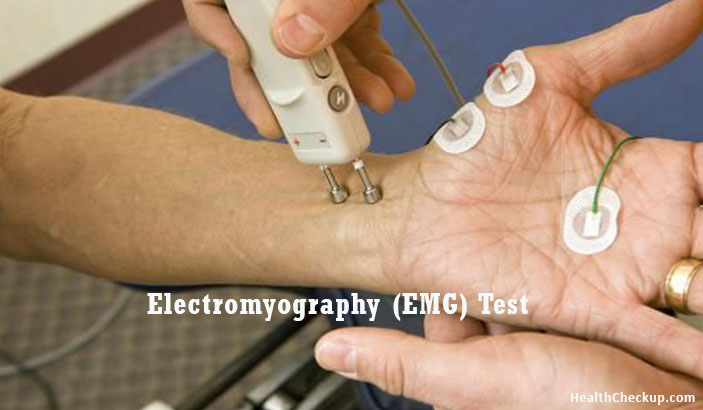Electromyography test, often referred to as EMG in its abbreviated form, is a medical procedure to evaluate the health of nerve cells as well as muscles controlled by motor neurons. Electrical signals are transmitted via motor neurons are actually instructions to muscles for contraction. An EMG converts those signals into graphs, sounds or numerical figures that only the experts can understand and interpret.
An EMG test involves tiny devices called electrodes that convey or identify electrical signals. In times of a needle EMG, a needle electrode is inserted into a muscle to record the electrical activities in the muscle. Nerve conduction study is another part of EMG and uses electrodes tape tied to the skin in order to measure strength and speed of signals moving between two or more points.
Results of EMG test are very crucial as these reveal the health of nerves or muscles as well as the issues with signal transmission between these two.
Purpose of EMG(Electromyography Test)
An expert medical professional suggests an EMG test if you have any or many of the following symptoms or signs because its result will help the expert understand if the problem is anything to do with muscle or nerve disorder.
- Numbness
- Tingling
- Cramp
- Muscle pain
- Muscle weakness
- Particular types of limb pain
EMG (Electromyography Test) results are important to help diagnose or discard a number of following conditions:
- Muscle disorder like polymyositis or muscular dystrophy
- Diseases like myasthenia gravis adversely affecting nerve to muscle signal transmission
- Disorders affecting motor neurons in the spinal cord or brain, such as polio or amyotrophic lateral sclerosis.
- Nervous system disorder (excluding the spinal cord), such as peripheral neuropathies or carpal tunnel syndrome.
- Disorder affecting the root of the nerve, such as a herniated disk in the spinal chord
Preparation For EMG Test
You need to take some precautions before undergoing Electromyography test. The neurologists, who conduct EMG, will ask you if you have any of the following particular conditions:
- If you have a pacemaker or any other electrical medical device
- If you take any blood thinning medicine
- If you have haemophilia which is a blood clotting disease causing prolonged bleeding
Bathing
Have a bath a little before the EMG medical test as it helps in removing oils from the skin. Don’t apply any cream or lotion on the body.
EMG Test Procedure
It is more likely that you will be asked to wear a hospital gown for the test and have to lie down on a table.
Electrodes Placement: The medical lab technician will place several surface electrodes at different locations on the skin, depending on the areas where you feel symptoms related to nerve conduction disorder. The attendant may also insert needle electrodes instead of surface electrodes.
Sensations: The electrodes transit a tiny fraction of electrical current at a certain time and it feels like a spasm or twinge. You may feel pain or discomfort due to needle insertion but it will end up as soon as the needles are expired.
Instructions: During needle EMG, the doctor will evaluate if there is any spur of the moment electrical activity when you are taking rest. Such activities are alien to healthy muscle tissue and if any such activity is identified, the neurologist measures the degree of such activity when the muscle is slightly contracted. The lab attendant or neurologist will give you instructions about when to contract your muscle and when to keep it at rest. You may have to change the positions of your muscles several times during the test.
Electromyography Test Risks
EMG is a low risk test and usually involves no complications. However, there is a slight risk of bleeding, nerve injury or infection if a needle electrode is inserted. When muscles lining chests are evaluated with a needle electrode, there is a little risk that it could cause air to enter into the area between the chest wall and lungs, leading to lung collapse.
EMG Test Results
Results of EMG test is extremely important. The neurologist assesses the test results to understand if there is any disorder of the patient in question and if there is any problem, whether it is severe or not. Proper diagnosis is the basic condition for effective treatment. Consult your doctor if you have any nerve-related symptoms as specified above and the expert will tell you if you need an EMG test (Electromyography) immediately.
Medically Reviewed By









